In this step-by-step guide, you’ll find keyword research tips and on-page SEO best practices for writing SEO content in Vancouver.
If you’re looking to write SEO content for your Vancouver-based business, we’re here to help. We’ll first look at how to find out what type of content to write about by researching what your audience is searching for. Once we find the keywords we want to include in our content, we’ll show the exact process that we use to ensure your content is optimized for search engines.
Keyword research is the process of finding what your audience is searching on Google. The reason why keyword research is important is because it gives direction to your on-page SEO campaign. During your keyword research process, you’ll uncover what your audience is searching, how many times that search query is being made per month, and how difficult it is for you to begin ranking for that keyword.
In our keyword research process, we’ll be using SEMrush. If you’re relatively new to SEO, we suggest you to target keywords with low “keyword difficulty”. Keyword difficulty is an estimate of how hard it is for a website to rank for a keyword.
Keyword difficulty is ranked 0-100. Anything above a keyword difficulty 29 will be hard for a website to rank for – if it has not had SEO work done on it prior. Follow the steps below using SEMrush to find keywords with low ranking difficulty.
Keyword Magic Tool > Search [topic related to your business] > KD % > Custom range: 0 – 29 > Apply
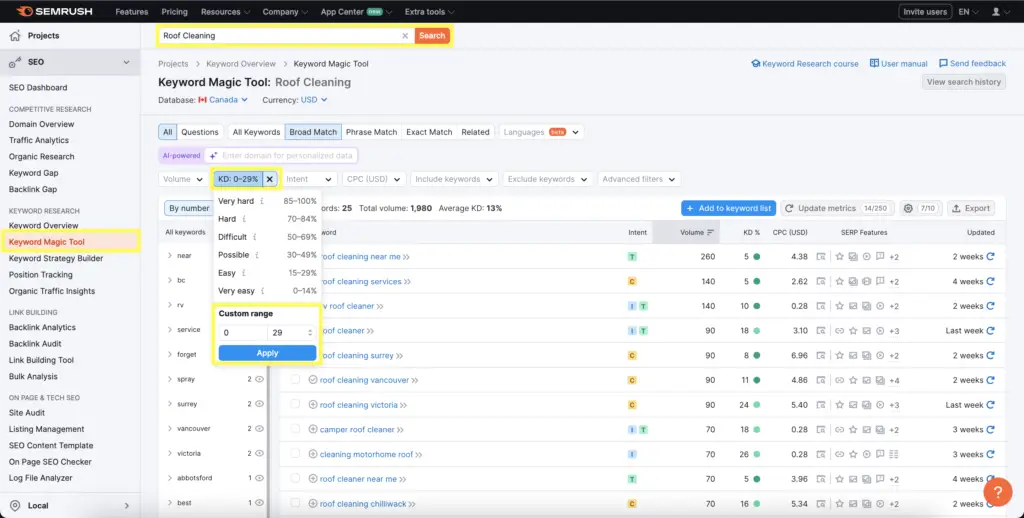
In order to have a successful keyword research session, you have to put yourself in the shoes of the searcher and understand the searcher’s intent while doing keyword research.
Ask yourself these two questions:
After completing your keyword research, you’ll have to analyze what the searcher’s intent is behind each keyword. When in doubt of what the searcher’s intent is, copy your keyword and paste it into Google search and analyze the types of search results you see or simply ask yourself: “If I was making this search, what would I be looking for?”
Informational searches are made by users looking to find information or to find an answer to a question.
Informational search examples:
Navigational searchers are made by users looking to find a specific website or web page.
Navigation search examples:
Commercial searches are made by users looking to find more information on a product or service before making a purchase.
Commercial search examples:
Transactional keywords are made by users looking to complete a transaction. This includes searches regarding buying products or services.
Transactional Search Examples:
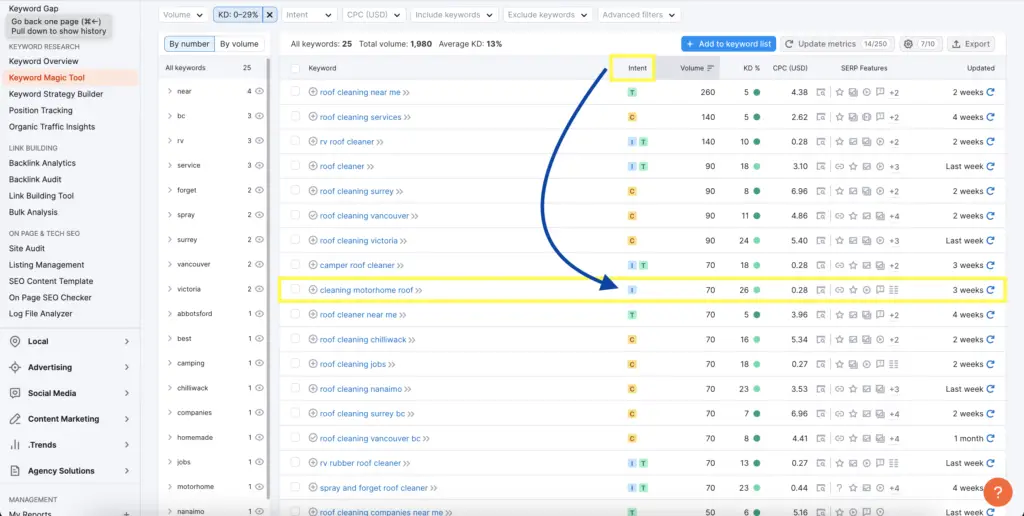
Google understands the overall topic of a web page by looking at headings and the hierarchy of each heading.
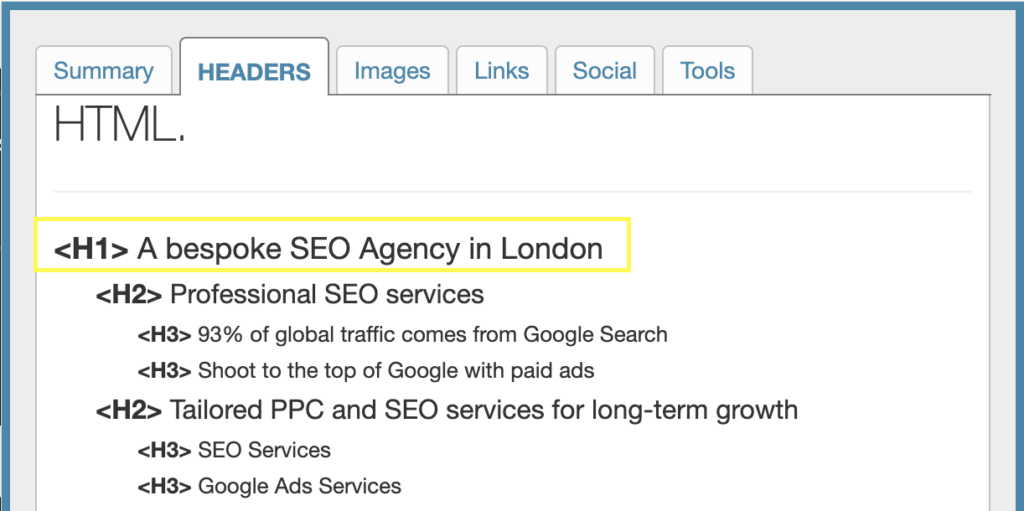
H1 tags help tell Google what the most important topic on this web page is. This is where you should include your target keyword. There should only be one H1 per web page. If there is more than one H1 tag on your web page, it may confuse Google on what the main topic on a web page is.
Your H2 tags should include the secondary topics related to your main keyword and should use your target keyword in a natural way. Let’s say your target keyword is “social media marketing” . Some H2s you can use on your web page are “social media marketing explained” or “our social media marketing process”. It’s important not to stuff keywords on your web page and only use your keywords where it’ll help your website visitors understand the content on your web page better.
The same concept from above applies to any heading tags beyond H2s. H3 tags should help break down each topic into further detail. As long as you’re following a logical distribution of your heading tags throughout your content creation process, the easier you’ll make it for search engines to read and understand the content on your web page.
Once you’ve thoroughly done your keyword research, you can begin optimizing your web pages around the keywords you’ve selected.
Page title and Meta descriptions is what you see on Google before visiting a website. You want to ensure that you’re using your target keyword in a natural way in both your page title and description.

It’s important to use your selected keyword in your content in a natural way without keyword stuffing. It’s also important to use semantically related terms to your target keyword. For example, if your target keyword is “New York hair salon” some semantically related terms would be: hair stylist, scissors, clippers, etc. You can enter this prompt into chat GPT to find semantically related keywords:
Give me 15 close semantically related terms to [“your keyword”].
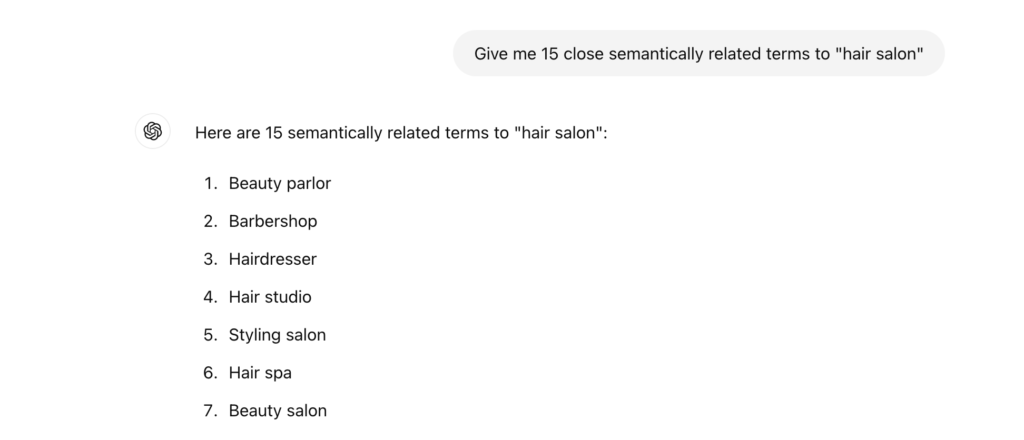
Image alt text is the written copy that appears in place of an image if the image fails to load on a user’s screen. Google also uses this text to get a better understanding of what this image is. Image alt text is not considered a huge on-page optimization ranking factor; however, by including your target keyword in image alt text where it makes sense, you may potentially drive more traffic to your website by having your images indexed in Google Images.
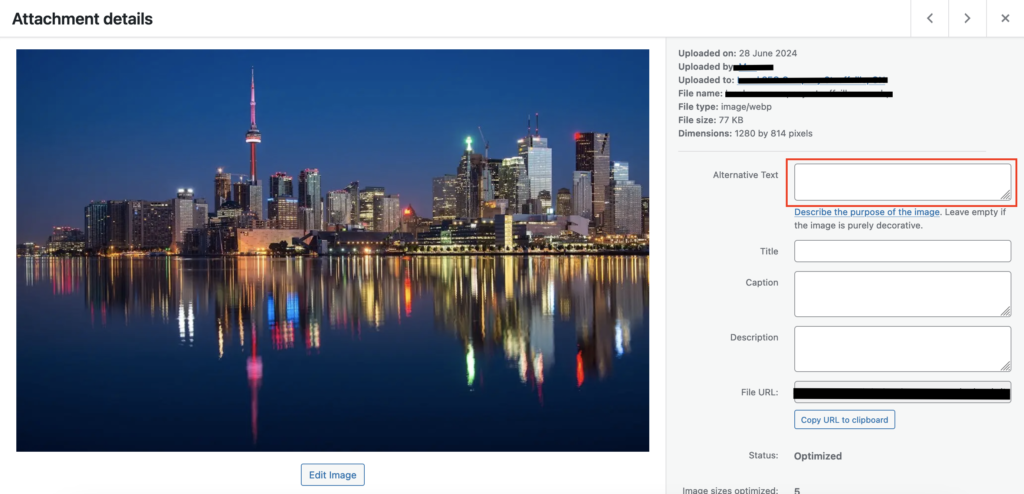
One of the best things you can do for your website is to optimize its loading speed. Recall the last time you waited more than 3 seconds when a page failed to load. You simply went back to Google and found a different website to find what you were looking for. Not only is this a missed opportunity to get eyeballs on your business, but Google also records this as a “poor user experience”. Google wants to provide a good experience for their searchers so they continue to use their search engine so when people who visit your website frequently leave quickly, it’ll negatively impact your rankings over time
Be sure to analyze your website’s loading speed for both desktop and mobile devices.
For complex optimizations, we recommend working with experienced SEO professionals. You can view your website loading speed by using Page Speed Insights.
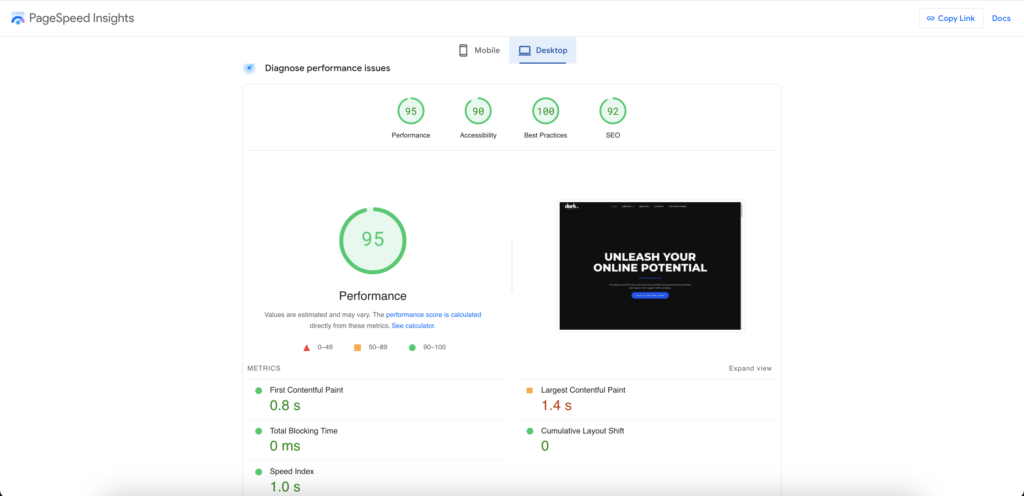
The URL of your website should be organized with no clutter. You want to remove unnecessary information from your URL such as dates or random symbols and signs unless it is absolutely necessary to include that information for website users to understand your content. The best URL setting to set up for your website is [your URL] + page title. Including your target keyword in a natural way in your URL will further help Google understand what your web page is about.
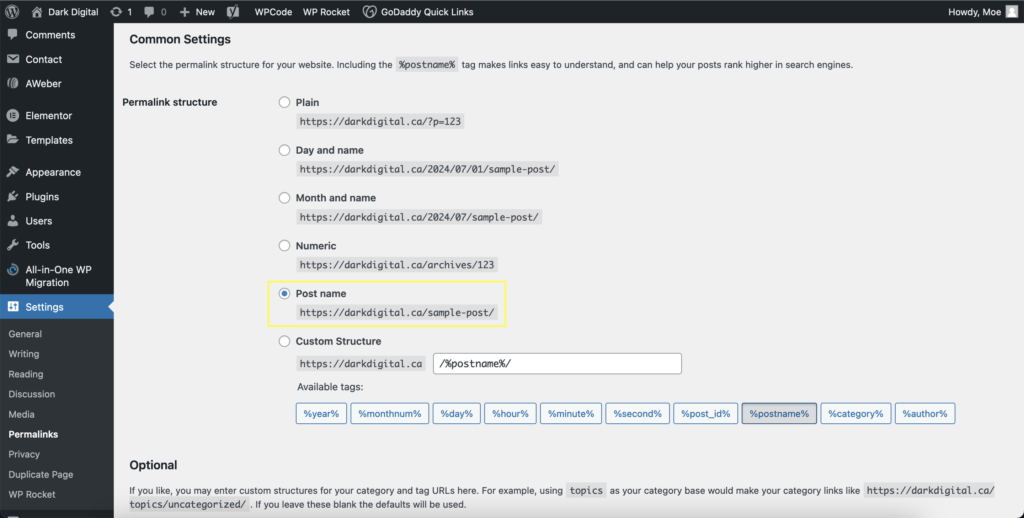
The most accurate way to track your website’s growth is to set up a Google Analytics and Google Search Console account. These tools will help you collect data on which search terms you’re being found for and which pages are performing best on organic search results.
It is crucial to collect this data because it helps your business make complex decisions based on data.
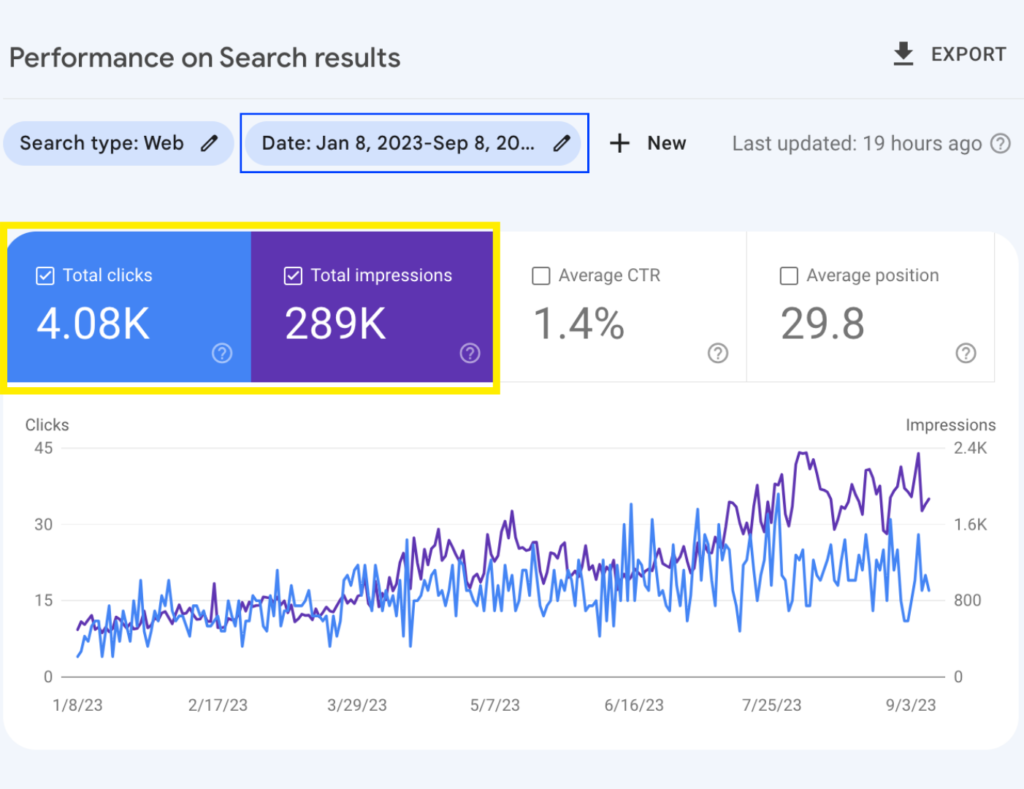
Remember to always put your user’s experience first and to avoid tricks to manipulate Google algorithms because doing so will cause more damage than good in the long run.
Writing effective SEO content for your Vancouver-based business involves a strategic approach that begins with thorough keyword research. By understanding what your audience is searching for, you can create content that meets their needs and aligns with their search intent, whether it’s informational, navigational, commercial, or transactional.
To ensure your content is well-optimized for search engines, distribute keywords naturally within your headings, using a clear hierarchy from H1 to H3 and beyond. Incorporate semantically related terms to enrich your content without keyword stuffing. Optimize image alt text, URLs, page titles, and meta descriptions to enhance your website’s visibility.
By following these steps, you’ll create SEO content that not only ranks well on Google but also provides valuable information to your audience, ultimately driving more traffic to your website and boosting your online presence in Vancouver.
You made it this far, we may as well get to know each other!
Book a discovery call with our team and discover the potential your business has to thrive in a world that’s constantly online.